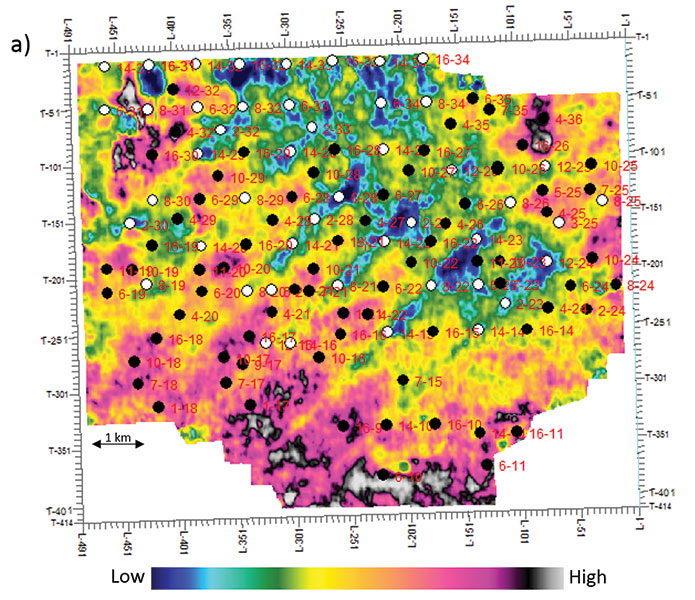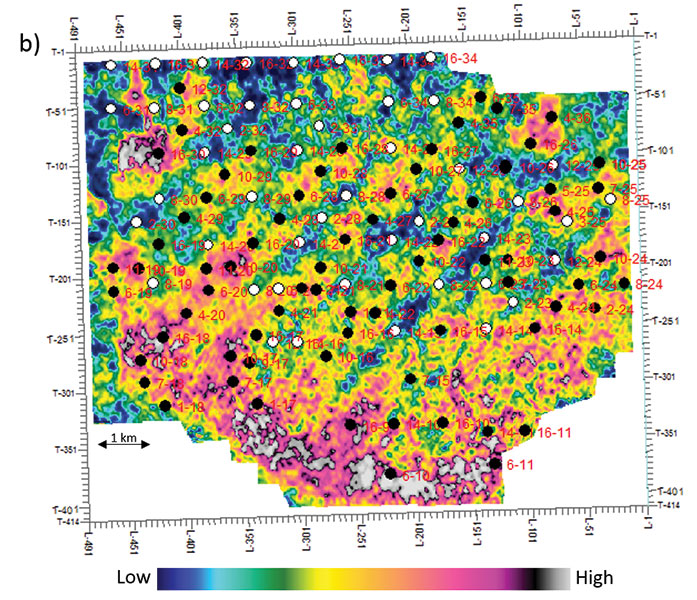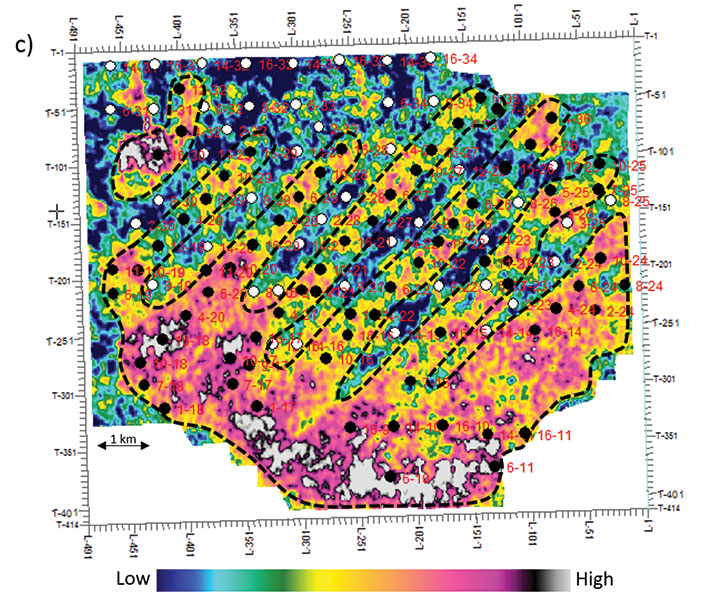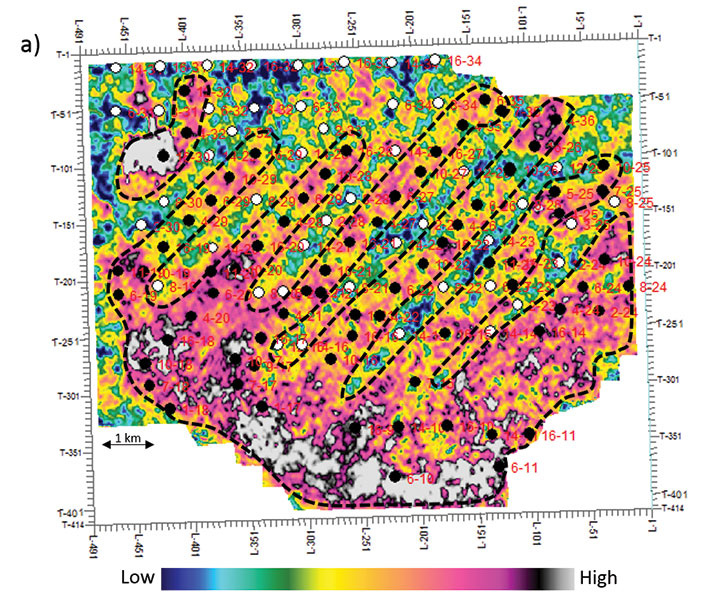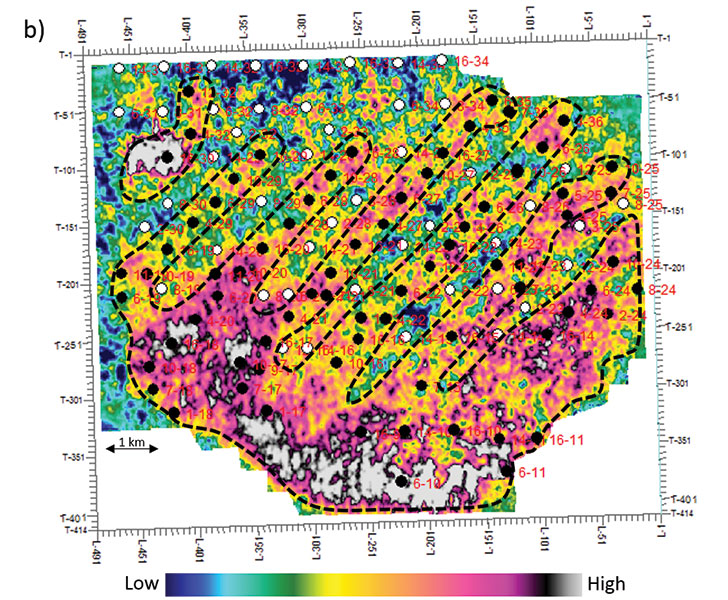GCJoint Impedance Inversion Transforms Aid Interpretation*
Satinder Chopra¹, Ritesh Kumar Sharma¹, Mohammad Hossein Nemati¹, and Peter Cary¹
Search and Discovery Article #41667 (2015)
Posted August 24, 2015
*Adapted from the Geophysical Corner column, prepared by the authors, in AAPG Explorer, July, 2015, and entitled "Impedance Inversion: Big Aid In Interpretation".
Editor of Geophysical Corner is Satinder Chopra ([email protected]). Managing Editor of AAPG Explorer is Vern Stefanic. AAPG © 2015
¹Arcis Seismic Solutions, TGS, Calgary, Canada ([email protected])
Having first examined the poststack and prestack methods of seismic impedance inversion (Search and Discovery Article #41622 and #41664) we now end the three-part series by turning our attention to joint inversion of multicomponent  data
data .
.
Multicomponent seismic  data
data offers many advantages for characterizing reservoirs with the use of
offers many advantages for characterizing reservoirs with the use of  PP
PP and PS
and PS  data
data . A number of articles discussing the applications of multicomponent
. A number of articles discussing the applications of multicomponent  data
data previously were published in the Geophysical Corner by Bob Hardage and his co-authors (Search and Discovery Articles #40688, #40701, #40792 and #40888). They can be referred to for more information.
previously were published in the Geophysical Corner by Bob Hardage and his co-authors (Search and Discovery Articles #40688, #40701, #40792 and #40888). They can be referred to for more information.
|
♦General statement ♦Figures ♦Method ♦Example ♦Conclusion
♦General statement ♦Figures ♦Method ♦Example ♦Conclusion
♦General statement ♦Figures ♦Method ♦Example ♦Conclusion
♦General statement ♦Figures ♦Method ♦Example ♦Conclusion
♦General statement ♦Figures ♦Method ♦Example ♦Conclusion
♦General statement ♦Figures ♦Method ♦Example ♦Conclusion
♦General statement ♦Figures ♦Method ♦Example ♦Conclusion
♦General statement ♦Figures ♦Method ♦Example ♦Conclusion |
Inversion of P-wave For carrying out any consistent analysis, the first step is to carry out an accurate Joint inversion can be carried out with poststack as well as prestack multicomponent seismic  PP PP stacked stacked  data data , the PS stacked , the PS stacked  data data , the wavelets extracted from the two datasets in the broad zone of interest, and the P-impedance and S-impedance models. While the , the wavelets extracted from the two datasets in the broad zone of interest, and the P-impedance and S-impedance models. While the  PP PP stack is the normal incidence stack is the normal incidence  data data , PS , PS  data data may be taken as the stack at say 12 degrees or 15 degrees, where the mode conversion sets in. The reflectivities modeled at 0 degrees and 15 degrees and convolved with the appropriate wavelets are compared with the real may be taken as the stack at say 12 degrees or 15 degrees, where the mode conversion sets in. The reflectivities modeled at 0 degrees and 15 degrees and convolved with the appropriate wavelets are compared with the real  PP PP and PS seismic and PS seismic  data data , and the error between them is minimized in a least squares sense. , and the error between them is minimized in a least squares sense. data data and the error is then iteratively minimized in a least squares sense. and the error is then iteratively minimized in a least squares sense.In each case the output from joint inversion is P-impedance, S-impedance and density Here is a case study from central Alberta, Canada, that demonstrates the application of joint inversion. The Pembina Field in central Alberta is a mature field that has been producing since the late 1950s. The Cardium Formation, due to its favorable reservoir formation characteristics, has been producing a mix of light oil and liquids-rich natural gas for the last five decades. It comprises two sandstones: The upper sandstone and the conglomerates are separated by an erosional unconformity surface. All three zones (conglomerates, upper sandstone and lower sandstone) are oil and gas producers and collectively comprise the Cardium Formation. The upper sandstone has a higher porosity (about 15 percent), followed by the lower sandstone (about 12 percent) and then the conglomerates (about 5 percent). Consequently, the production from these formations is also in that order. The Cardium Formation is underlain by a thick package (more than 300 meters) comprising the Blackstone shale units. Overlying the Cardium is another 320-meter thick shale (Lea Park) extending up to the Wapiti Formation. These thick shale units provide seals to the Cardium Formation and prevent leakage of trapped hydrocarbons. As is common knowledge, when a field has been producing for some time, the reservoir pressure gradually falls and reaches a stage when it is not sufficient to bring the oil to the surface. Sometimes oil is lifted to the surface by means of pumps, in a process referred to as artificial lift. More profitably, the pools are subjected to secondary recovery processes, wherein fluids such as water or gas are injected into the reservoir to artificially increase the pressure and thereby force the oil to the surface. When water is used in this process, the recovery process is called water-flooding. As the Pembina fields have been producing for the last five decades, most of the Cardium reservoirs are now under water-flooding, and the operators are always aiming to economically optimize the water-flooding so as to maximize production. For the area selected for this study, the injection wells have been drilled in linear patterns along the subsurface stress direction that is predominantly northeast-southwest. The production wells are drilled in between the lines of injection wells so as to optimize the overall sweep efficiency for maximum oil recovery. Such type of water-flood networks not only arrest the production declines, but enable enhanced production and add to the overall reserves of the fields. Core and well log analysis indicate that both the net pay and porosity in the Cardium Formation show northwest-southeast trends and are seen as low and high amplitudes on the seismic As stated above, there are a number of injection and production wells that fall on the 3-D survey, but none of them have been logged. Consequently, a well with log curves located just outside the 3-D survey was projected inside it, and the correlation of Simultaneous inversion was run on the The definition of the northeast-southwest trends is seen on each of these displays, but seems to be more pronounced on the prestack Similarly, in Figure 4 we show density equivalent stratal slices from the These examples illustrate the advantages of joint inversion, which could be utilized for more accurate seismic interpretation or any subsequent reservoir characterization exercises that may be undertaken. Interestingly, the oil production Nevertheless, prestack joint inversion has portrayed a clearer picture than the other types of inversions attempted earlier, and so holds promise as a definite aid in seismic interpretation. |

